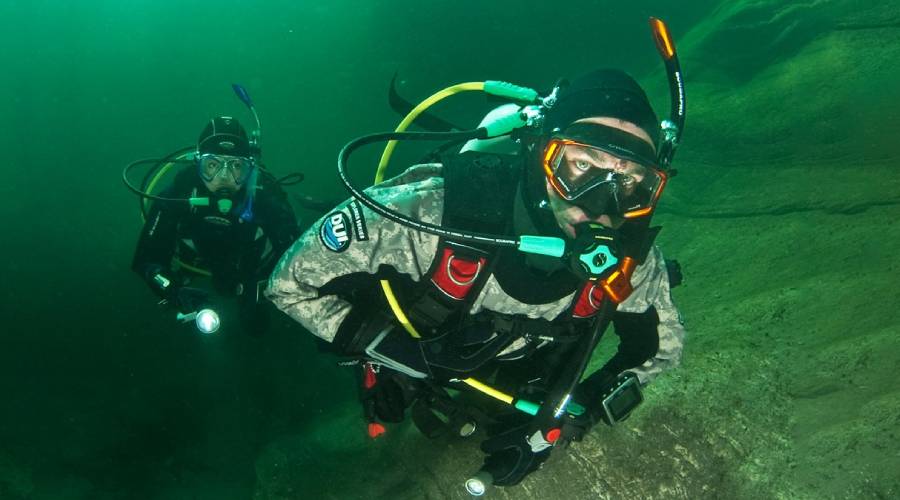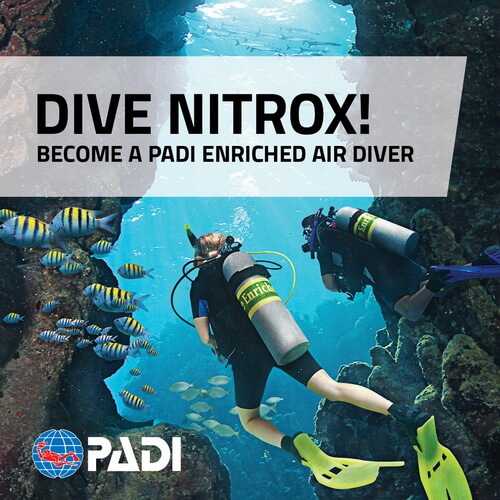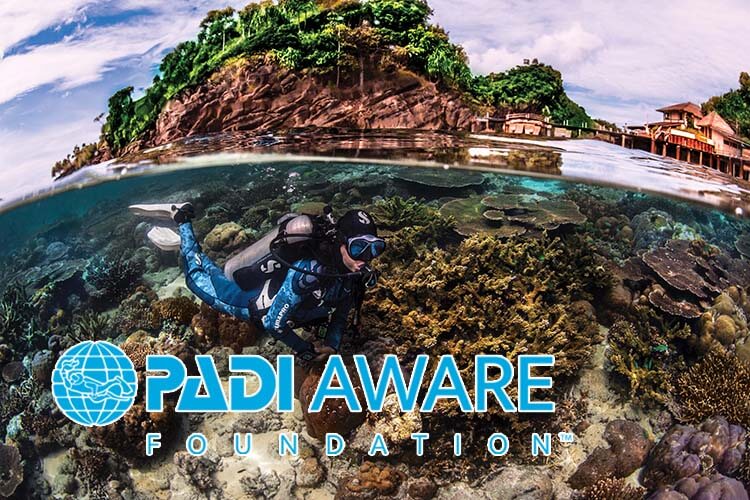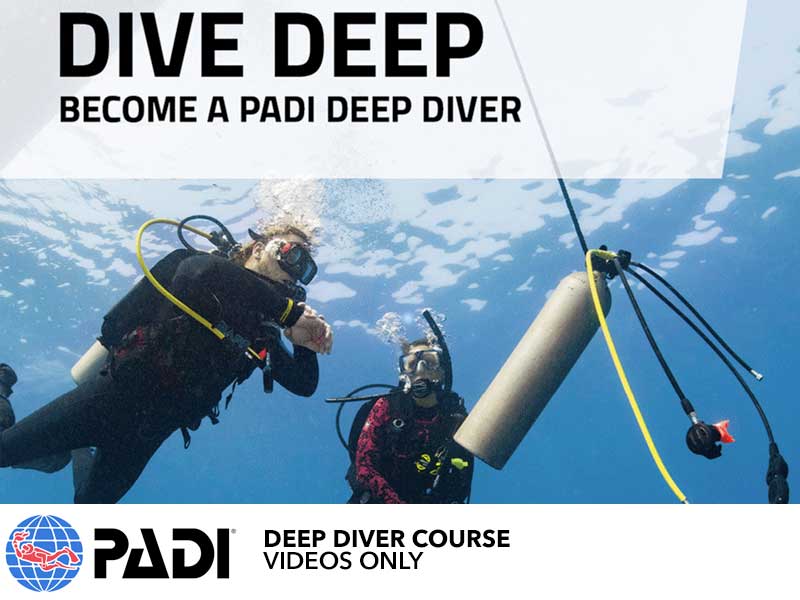Diving is a unique blend of adventure, skill, and exploration. For many, the journey begins with basic scuba certification, but the real excitement lies in specialized skills that open doors to new underwater experiences. This is where PADI specialties come in. These courses, offered by the Professional Association of Diving Instructors (PADI), are designed to enhance your diving expertise, allowing you to dive deeper—both literally and figuratively—into the world beneath the waves.
PADI (Professional Association of Diving Instructors) is the world’s largest diver training organization, recognized globally for its comprehensive and safe diving education. Their specialty courses are an extension of their philosophy: empowering divers to explore, protect, and enjoy the underwater world with the right skills and confidence.
But what makes PADI specialties so appealing? For one, they cater to a wide range of interests and diving goals. Whether you dream of photographing vibrant coral reefs, delving into shipwreck mysteries, or ensuring safety with extended dive times, there’s a course tailored just for you. PADI specialty courses not only help you become a better diver but also deepen your connection to the underwater realm.
What Are PADI Specialties?
PADI specialties are short, focused courses that cover specific diving techniques, equipment, or environments. These are designed to help divers build upon their existing skills, tackle challenges, and safely explore new diving opportunities. Some courses, like Peak Performance Buoyancy, fine-tune fundamental abilities, while others, like Wreck Diving, introduce you to entirely new underwater experiences.
Typically, PADI specialties consist of a combination of theory and practical sessions. You’ll learn the “why” behind the skill during classroom or online lessons and then apply that knowledge in real-world dives. Courses are flexible, often taking just one or two days to complete, and can be pursued individually or alongside your regular dives.
Why Choose a PADI Specialty Course?
Specialty courses are more than just certifications—they’re stepping stones to becoming a more competent, confident, and adventurous diver. Here’s why divers of all levels flock to these programs:
- Skill Enhancement: PADI specialties focus on practical, real-world skills like navigating underwater, diving in limited visibility, or handling enriched air tanks.
- Safety First: Many courses teach techniques to ensure safer dives, especially in challenging conditions.
- Passion and Exploration: Whether it’s marine conservation or underwater photography, specialties allow you to immerse yourself in areas you’re passionate about.
- Career Opportunities: For those pursuing professional diving certifications, specialties often serve as prerequisites or valuable additions to a resume.

Exploring Popular PADI Specialties
Diving is as diverse as the underwater ecosystems we explore, and PADI specialties reflect this variety. Some courses cater to specific environments, like shipwrecks or caves, while others enhance fundamental diving techniques. Each specialty brings its own excitement and challenges, making the journey as rewarding as the destination.
What Makes a PADI Specialty Popular?
The popularity of a PADI specialty is influenced by several factors:
- Accessibility: Some courses, such as the Enriched Air (Nitrox) Diver, are widely applicable and don’t require rare conditions or special locations.
- Skill Enhancement: Divers gravitate toward courses that improve their overall diving experience, like Peak Performance Buoyancy, which makes every dive more enjoyable.
- Adventure Appeal: Courses like Wreck Diver or Deep Diver satisfy the adventurous spirit, making them stand out as thrilling options.
- Practicality: Specialties that align with safety or extend bottom times, like the Nitrox course, are highly valued by divers planning longer or more technical dives.
Regional and seasonal factors also play a role. For instance, Ice Diver may be popular in colder regions, while Coral Reef Conservation resonates in areas with delicate ecosystems.
List of Popular PADI Specialties
Here’s an overview of some of the most sought-after PADI specialty courses, each offering unique benefits to divers:
- Enriched Air (Nitrox) Diver
- Why it’s popular: Allows divers to extend bottom times by reducing nitrogen absorption. This is especially beneficial for repetitive dives or those in deeper waters.
- Skill focus: Learning to handle enriched air cylinders and understanding gas analysis.
- Deep Diver
- Why it’s popular: Enables exploration of underwater sites like wrecks or reefs located at greater depths (up to 40 meters/130 feet).
- Skill focus: Managing buoyancy, gas consumption, and safety while diving deeper.
- Underwater Photographer
- Why it’s popular: Ideal for divers looking to capture their underwater adventures and showcase marine life.
- Skill focus: Handling underwater cameras, lighting techniques, and understanding marine subjects.
- Wreck Diver
- Why it’s popular: Combines adventure with history, as divers explore submerged ships, planes, or vehicles.
- Skill focus: Mapping wrecks, penetration techniques, and recognizing hazards.
- Peak Performance Buoyancy
- Why it’s popular: Mastering buoyancy improves every aspect of diving, from air consumption to maneuverability.
- Skill focus: Fine-tuning weight distribution, body position, and breathing control.
- Rescue Diver
- Why it’s popular: Focuses on emergency response and self-rescue techniques, making it a favorite for safety-conscious divers.
- Skill focus: Identifying and handling diving emergencies, both underwater and at the surface.
Case Study: Enriched Air Diver – The Unmatched Favorite
Let’s dive deeper into the popularity of the Enriched Air (Nitrox) Diver course. According to data from PADI, this specialty consistently ranks as the most enrolled course worldwide. Its broad appeal stems from its practicality and impact on safety and enjoyment.
Key Benefits of Nitrox Diving:
- Extended Bottom Time: Nitrox contains a higher concentration of oxygen and less nitrogen, reducing the risk of nitrogen narcosis and allowing divers to stay underwater longer.
- Reduced Fatigue: Many divers report feeling less tired after diving with enriched air.
- Universality: Nitrox is compatible with a wide range of dive profiles, making it a versatile tool for recreational and technical divers alike.

The Most Popular PADI Specialty
Among all PADI specialties, one course stands out as the clear favorite: Enriched Air (Nitrox) Diver. Its blend of practicality, safety, and flexibility makes it a must-have certification for divers of all levels. Whether you’re exploring shallow coral reefs or planning multiple dives on a single trip, this specialty ensures you get the most out of your underwater adventures.
Why Is Enriched Air (Nitrox) Diver the Most Popular PADI Specialty?
The Enriched Air (Nitrox) Diver course is particularly appealing for its universal benefits:
- Longer Dive Times: One of the biggest limitations in diving is the accumulation of nitrogen in the body. Since Nitrox contains a higher oxygen concentration and less nitrogen, divers can stay underwater longer without exceeding no-decompression limits.
- Reduced Risk of Decompression Sickness (DCS): By reducing nitrogen absorption, Nitrox decreases the likelihood of DCS, especially during repetitive or deep dives.
- Diver Fatigue Reduction: Many divers report feeling less fatigued after diving with enriched air, making it an excellent choice for dive vacations involving multiple dives per day.
- Widespread Availability: Most dive centers around the world offer Nitrox, and tanks are easy to rent or fill.
- Ease of Learning: The course requires no additional dives, making it quick and straightforward to complete.
How Does Enriched Air Diving Work?
To understand why Nitrox is so beneficial, it’s important to grasp its basics:
- Composition: Regular air contains approximately 21% oxygen and 79% nitrogen. Enriched Air Nitrox typically has an oxygen concentration of 32-36%, which reduces the percentage of nitrogen in the gas mix.
- Effect on the Body: By reducing nitrogen levels, the body absorbs less of it during a dive, thereby extending safe dive times. This makes Nitrox ideal for divers who need longer bottom times or wish to minimize surface intervals.
Example Scenario:
Imagine you’re diving at 18 meters (60 feet). Using air, your no-decompression limit is about 56 minutes. With Nitrox (36% oxygen), this limit increases to 95 minutes—almost doubling your dive time!
What Do You Learn in the Enriched Air Course?
The Enriched Air Diver course is a combination of theory and practical knowledge, ensuring divers can safely and confidently use Nitrox. Here’s what you’ll cover:
- Theoretical Knowledge
- Understanding the benefits and limitations of enriched air.
- Learning to manage oxygen exposure and stay within safe limits using tools like the Oxygen Exposure Table.
- Understanding dive computer settings and how to adjust them for Nitrox.
- Practical Application
- Learning to analyze the oxygen content of your tank using an oxygen analyzer.
- Marking cylinders to reflect their specific gas mix.
- Handling enriched air cylinders and reviewing equipment compatibility.
- Course Details
- Duration: Typically 3-4 hours, including classroom or online learning and practical exercises.
- Prerequisites: Open Water Diver certification (or equivalent).
- Certification: Once completed, you’ll receive a PADI Enriched Air Diver certification, which is recognized globally.
Real-World Applications of Enriched Air Diving
The versatility of Nitrox is a key reason for its popularity. Divers use it in a variety of scenarios:
- Liveaboards and Dive Vacations: Multiple dives in a day are common on dive trips, and Nitrox reduces the nitrogen load over repetitive dives.
- Deeper Recreational Dives: While staying within recreational limits (40 meters/130 feet), Nitrox allows longer exploration times at depth.
- Health-Conscious Diving: Some divers prefer Nitrox for its perceived benefits in reducing post-dive fatigue.
Case Study Example:
A group of divers on a five-day trip to the Maldives completed three dives per day. Those certified for Nitrox not only had longer dive times but also reported feeling more refreshed compared to their air-diving counterparts.
The Enriched Air (Nitrox) Diver course has rightfully earned its reputation as the most popular PADI specialty. Its accessibility, versatility, and undeniable benefits make it a staple for divers, whether they’re new to the sport or seasoned enthusiasts.

Choosing the Right PADI Specialty for You
Every diver’s journey is unique, shaped by their interests, goals, and diving conditions. With over 25 specialty courses available, PADI provides opportunities to explore niche passions or refine essential skills. Choosing the right specialty is an important step in enhancing your diving experience and making the most of your underwater adventures.
How to Decide Which PADI Specialty to Take
Selecting the right specialty starts with self-reflection and practical considerations. Here are some guiding questions to help you decide:
- What Interests You Most?
- Are you drawn to the mysteries of shipwrecks or the vibrant life of coral reefs? Courses like Wreck Diver or Underwater Photographer cater to specific interests and passions.
- What Skills Do You Want to Improve?
- If buoyancy control has been a challenge, Peak Performance Buoyancy can transform your diving experience.
- For those seeking to increase safety awareness, the Rescue Diver course is an invaluable choice.
- What Diving Environments Do You Frequent?
- Divers in colder climates might benefit from Dry Suit Diver training, while those in tropical waters may enjoy Drift Diver or Fish Identification.
- What Are Your Long-Term Goals?
- If you aspire to become a professional diver or instructor, certifications like Search and Recovery Diver or Deep Diver may align with those ambitions.
Questions to Ask Before Enrolling
Before signing up for a PADI specialty, consider these practical questions:
- Prerequisites: Does the course require a specific certification or experience level?
- Time Commitment: How long will the course take, and can it fit into your schedule?
- Location: Is the specialty relevant to the conditions at your local dive sites?
- Equipment: Will you need additional gear for the course, such as underwater cameras, dive lights, or a dry suit?
Customizing Your Dive Education
A great way to maximize your training is to combine specialties that complement each other. For example:
- Deep Diver + Nitrox: Perfect for safely exploring deeper sites while maximizing bottom time.
- Underwater Photographer + Fish Identification: Capture the beauty of marine life with the added knowledge of what you’re photographing.
- Peak Performance Buoyancy + Drift Diver: Control your movements effectively in strong currents.
Example Combination:
A diver planning a wreck diving trip could combine Wreck Diver, Nitrox, and Deep Diver specialties to confidently explore deep shipwrecks with extended dive times.
Specialty Highlights for Different Divers
To further tailor your choice, consider specialties suited to specific diving goals or environments:
| Diver Type | Recommended Specialties |
|---|---|
| Adventure Seekers | Wreck Diver, Deep Diver, Ice Diver |
| Conservation Advocates | Coral Reef Conservation, Project AWARE Specialist |
| Photographers | Underwater Photographer, Digital Underwater Imaging |
| Safety-Focused Divers | Rescue Diver, Search and Recovery Diver, Equipment Specialist |
| Cold-Water Enthusiasts | Dry Suit Diver, Ice Diver |
Real-World Advice for Specialty Selection
Consider the following anecdote:
Jessica, an open-water diver based in Florida, frequently dives on reefs with mild currents. She decided to enroll in the Drift Diver and Fish Identification courses. These specialties not only enhanced her skills but also deepened her appreciation for marine life, making every dive more enjoyable.
This demonstrates how aligning your training with your environment and interests creates a more fulfilling diving experience.
By carefully assessing your goals, local conditions, and aspirations, you can select the PADI specialties that will truly enrich your diving journey. These courses are more than certifications—they’re gateways to unforgettable underwater adventures.